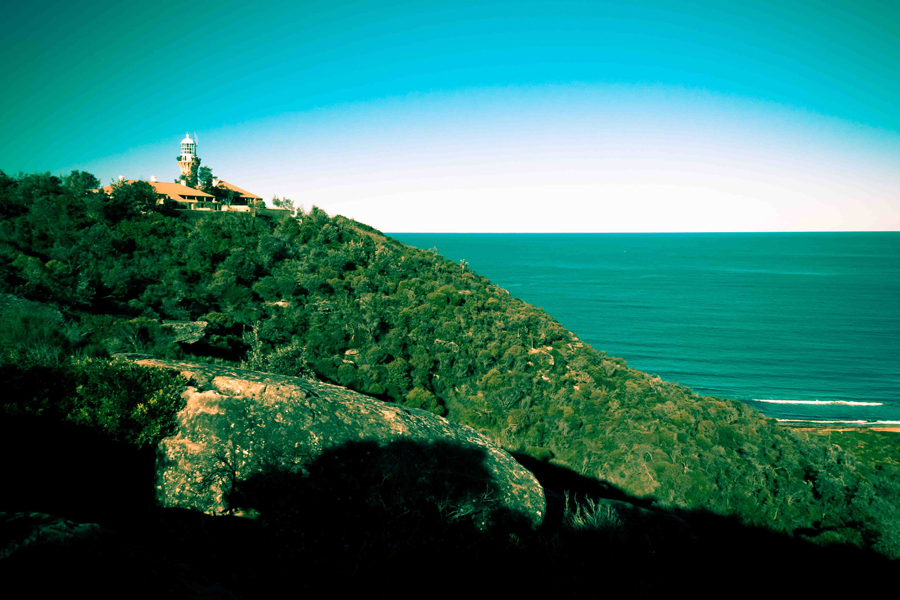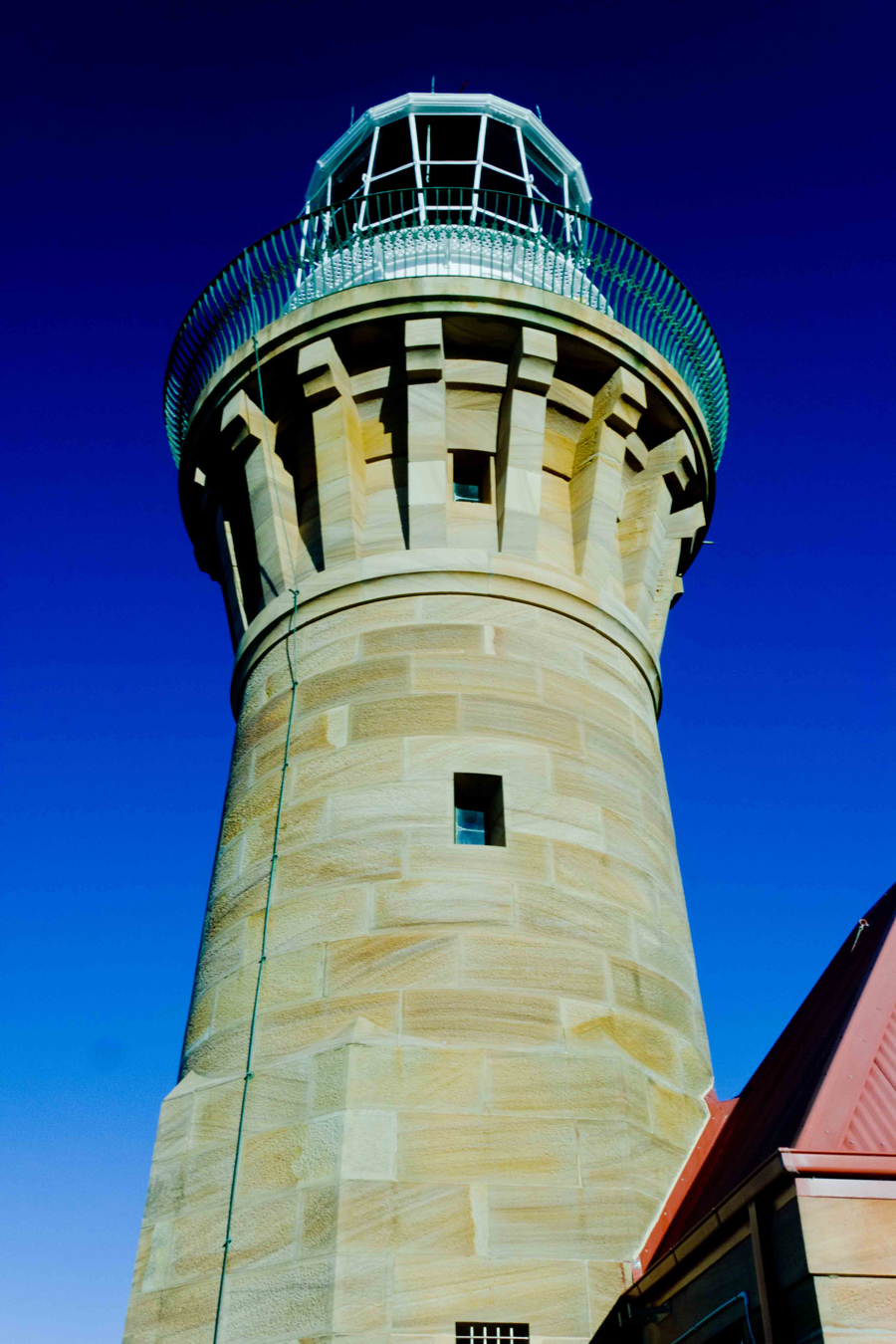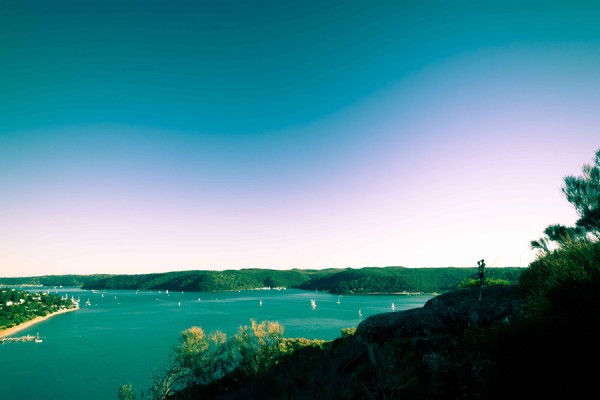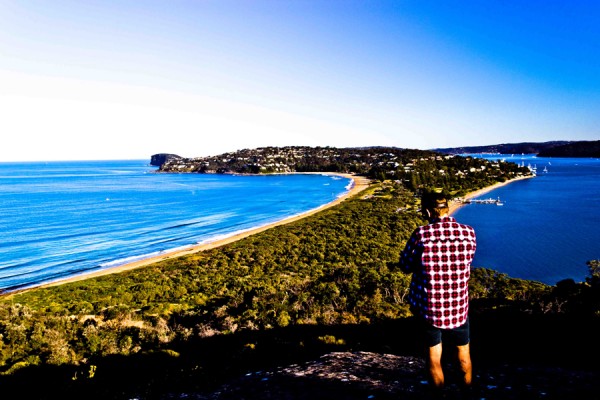I’m in a little yellow van with curtains, driven by an unshaven twenty-something wearing ray bans with unkempt, brown hair. The sluggishness of the van, combined with the gentle accelerations and the way he eases the brakes on, makes it seem more like a spaceship floating in the air than a street vehicle, and with its high, arched roof, it’s reminiscent of a gigantic, hunched turtle.


Ruminations on Architecture as Culture, the Value of Open Spaces, and Vans
We amble through the Northern Beaches of Sydney, New South Wales, Australia, heading towards the Barrenjoey Lighthouse at the northernmost tip of the peninsula. We’re not really in a hurry, because if you’re in a vehicle like this, you must take your time. A girl eyes me flirtatiously from the sidewalks, which I attribute to the transitive properties of the van making me attractive. Surf vans send out vibes to the people here — that you’re not afraid to stealth camp on the sides of roads, that wave quality is more important than shelter quality. Automatically, they’re either cool points or the cause for great alarm.
Bill’s the name of the driver; he’s a friend of Johnny, who I only just met in the hostel this afternoon. I told the receptionist I was catching a bus to the lighthouse and she told me Johnny was going — ask him for a ride. I did. She also told me it was great that I was going to the lighthouse, that I would love it. The night before, the other receptionist told me the story of how her mom hiked it days before her birth and that the place holds a special energy for her.
Paradoxically, I felt anything but a sense of elation heading there. It was more like indifference. Numbness. Boredom. Culture shock. Having spent the last two months motorbiking through Indonesia from one epic reef wave to another, surfing, I didn’t expect a lighthouse to do much for me. I was more interested in vans.
Really, why should we care about lighthouses?
I don’t say anything. The van rumbles evenly, but sways in the wind, jarring the cooking gear and Bill’s personal belongings noisily around in the back.
- “Where you going for dinner tonight?” Johnny asks.
“Uh, to a guy from work. I just told him last night about my situation.”
“Oh yeah?”
“So he said, ‘aw man, come over whenever you want,’ and then he called me back and he was like, ‘aw we’re having a roast tomorrow night, come over.’”
“Oh yeah?”
“So that’s just in Mona Vale.”
“Nice man.”
“And they’ve got little kids, so it’s real early, like five o’clock.”
“Well that’s pretty cool then, roast dinner. Lucky fucker, I’m jealous. I’ve had tuna and pasta for like eighteen months and I’ll probably have it for dinner again tonight.”
I don’t know these people. My thoughts drift. Heading up there seemed little more than a diversion to while away the time between jobs and surfing.
I try to figure out who Bill is.
- “So it’s just you cruisin’ around, do you have any — ?”
He interjects. “I work in Avalon, been at my job for like three and a half years, I was living in Collaroy.”
“For three and a half years?”
“Yeah, well, I’m not traveling, I’ve been living in Sydney, on the Northern Beaches for the last twelve years. But I’m just gonna head up to Brisbane cuz my family’s up there.”
“Are you originally from Australia?”
“No, I’m from New Zealand. And I’m gonna go stay with my family.”
We cruise into the parking lot.
- “Oh man, this looks sick,” says Johnny.
I wonder how one could be so excited about climbing to the top of a lighthouse. The parking lot is huge, yet there’s barely a space. We idle around until one opens up.
- “Jackpot,” says Bill, and he puts his blinker on.
“It’s crowded today,” I say.
Bill grips the wheel and wrenches the groaning van into the parking space.
- “No power steering on this beauty,” says Johnny.
“No way,” says Bill solemnly.
He pulls the parking brake and cuts the engine. I’ve only just met these guys but I trust them and like them.
Red light, dead horses
The two dominant texts on the Barrenjoey Lighthouse are The Red Light of Palm Beach and Tales from Barrenjoey, both by former keeper Jervis Sparks.
They outline the entire history, starting with the beginning of the settlement in the area by local customs, in an attempt to thwart the black market. Runners of tobacco and rum were using the bay as a side door to Sydney starting in the early 1800s.
Looking at the map one can easily see why. The Sydney Harbor, which is the most direct route to the city, is a densely populated area, where witnesses could be a problem. Broken Bay is a northern afterthought by comparison, a hidden little place out of the wind and swells, with largely undeveloped terrain around it. And it’s still pretty close to the city — nowadays, thanks to the harbor bridge, a half-hour ride by car gets you to the city center.
The lighthouse was built because people were dying. Australia’s east coast is subject to rapid formations of violent low-pressure systems just offshore, resulting in gale winds, heavy rainfall, and very rough seas. The large and dangerous storms occur about ten times per year and wreak havoc on the coast. Quite often, before the lighthouse, if a captain, seeking safe waters, attempted entrance to Broken Bay in the midst of one of these storms, he wouldn’t necessarily make it alive.
Construction without modern machinery took effort. The tower was erected in 1881. It’s 39 feet high and built from local sandstone, quarried and handcut onsite. Horses hauled it up from one hundred meters below on big trolleys, with one man at its bridle and a second at the rear with his hand on the brake. Sound tedious?
Good, because that was the easy part.
Looking at the lighthouse from below, you see the steeply inclined cliff faces that surround it. There’s an 8ft-wide path snaking through the boulders to the top. If just hiking it is difficult, then how the hell did they get the rest of the materials up? To make things worse, erosion from rainwater was a problem. The pathway functioned as a kind of culvert for storm water just as much as it did a walkway.
This is, in essence, the difficulty of the Northern Beaches. Life inside steep, swerving sandstone mountains surrounded by water is bound to be tricky. Significantly, the general capacities of Australians should never be underestimated.
There’s the story of the lens, first off. Lenses used in lighthouses are, essentially, highly engineered blobs of glass about the size of a small car, and as such, are insanely heavy. It came to the customs from Birmingham, England in a huge crate. A special trolley was created for the task. On the way up, the trolley man’s knuckles went white on the brake handle, undaunted at the prospect of dumping off a cliff an optics feat worth more than his entire life’s wages.
Then there was the pianist keeper who insisted on having one hauled up for his term. The custom-designed sled to get it up there was monstrous by necessity — a heavy load even without the piano for an old horse in poor health. Four days and four horses under extreme exertion got the job done. Three of the horses died.
What this illuminates is the larger picture of Australian work ethic. In my time in Sydney, I ended up doing a lot of laboring, and I saw that same dedication to doing whatever it takes to get the job done. And if that means horses are going to die, so be it. The only thing is, I think backpackers like me are the horses of today.
At some point someone decided they should switch fuels from kerosene to acetylene. All the other lighthouses were doing it. This guy named Dalén earned the Nobel Prize for the technology. The acetylene burned a lot brighter, which makes sense, because it’s a highly explosive (and poisonous) gas at room temperatures — not exactly the kind of stuff you’d want to be slamming around large quantities of in the back of a horse carriage up the side of a cliff. They hauled up the gas in cylinders annually, thirteen of them — one for each month plus a spare. No deaths were reported. Helicopters were eventually used. Incidentally, Dalén blinded himself in an acetylene explosion some time later.
Today the lighthouse remains operational, running on electricity. There are no keepers anymore. The area is public land, an open space for those who so desire to roam and explore, at their leisure.
Going for a walk
Halfway up the steeply inclined path of large, irregular sandstones through eucalypts, I bend down and put my hands on my knees, breathing heavily, resting.
“I should not have worn sandals,” Johnny says emphatically, eyeing his muddied feet.
The old path is ill maintained. Or maybe it’s me that’s ill maintained. Either way I’m sweating, and my pulse is high, but I’m feeling more alive — opened to the air and sea and the terrain. I listen to the constant roar of the ocean below. A good hike is worth something — the exercise clears your brain, nature stimulates the senses. I think about this for a moment before trudging on.
In the van, Johnny had asked Bill, “This lighthouse — is it pretty sick?” What he meant was, is it nice? What does it do for you? Why are we going there?
Bill responded immediately like he didn’t even have to think about it. “As you’re walking up there’s a few rocks you can climb up, if you go off the track, and you actually get a better view from those.” Bill told us. “But the lighthouse is good — you get a good view of the central coast.”
His answer reveals the main reason people come here. No one’s appreciating the lighthouse for all the historical quirks, interesting as they are. They come up here for the views, as a place to get fit, and to take a break from the cubicles of Australia’s largest city.
We drove through Palm Beach to get here, and in doing so observed a majority of shiny, fast cars, and gigantic houses. “There’s so many rich folks around here, isn’t there?” Johnny had suggested.
Bill replied, “On the weekends you get heaps of the rich people, heaps of people — just people from the city. They always drive out here.”
“So many rich folks! You see so many nice cars. I live in the countryside and Cornwall’s got real bad. No one gets paid well, and no one’s got any nice cars like that, so when you come to a place like this…These people are loaded compared to the people at home. Rich kids from the city. Everyone seems to have a nice car.”
Palm Beach in particular attracts movie stars, celebrities, and affluent businessmen, who have second houses lining the cliffs. But we come here too. Beyond affluent weekenders, in my six months residing in those beaches, I met all sorts of locals — stone masons, carpet layers, engineers, teachers, I met mothers and sons, and broke-ass travelers like me, and they all visit the lighthouse. The rich, the poor, the young and the old, they all seemed to hold this place in a certain reverence. Why?
Kids run by, playing. A couple takes pictures. Waves collapse, echoing around the cliff faces. We look down several hundred feet at the standup paddle boarders playing in the miniature surf. This is Australia at leisure.
We rest at a boulder facing Palm Beach to observe the ragged New South Wales coastline, with its intense orange sands and towering Norfolk pines at war with the cyan Tasman Sea.
All about the view
At the top a gravel walkway splits three ways. One way leads to the door of the lighthouse. “I’ve never been up there,” Bill admits, looking up through its tinted windows with his hands in his pockets. He has no desire to take the tour.
The lonely Barrenjoey is a standing testament to the strength and resilience of the Australian culture. The difficult access and erratic weather only meant that it would take longer to build, and they would sweat and bleed more. For 100 years, the ultra-high-powered beacon has blasted through the violence of the sea, as an undying sign of hope to captains at the ends of their wits, that they just might make it out alive.
We congregate at the Gledhill lookout. A middle-aged group of four converses and smiles. A couple embraces, plus the occasional kiss. Everyone’s caught their breath. We’ve all made it, and there’s a sense of celebration in the air.
Another girl gazes out through binoculars. This month, July, is mid-winter in the Southern Hemisphere, and Humpback whales are just beginning to migrate down to the Antarctic for the summer to gorge on plankton. They use the coastline to find their way. It’s these whales that everyone is watching for. “I came up here a few mornings ago and saw heaps of them,” says Bill, “but now maybe it’s the boats scaring them off.” There are quite a few sailboats tacking around in the breeze.
My sweat dries and the breeze becomes cool, and the sun warm. I look out with Bill and Johnny, and the mood becomes one of quiet reverence. When you hike to the top of the Barrenjoey Head, you rise above sea level, and your perspective rises with it, as you witness a huge chunk of our planet all at once. At sea level, you can see about seven miles to the horizon. From the Gledhill lookout, you get much more.
Earth on this scale becomes the story of its immensity. You are the audience. It is the theater. You learn its secrets — all these things coexisting at the same time. The sun, the sky, water in its many moods, the land, and life as we know it. You begin to wonder what’s beyond the sky, and what’s below the surface? Why are we here? It’s a humbling affirmation of our nothingness — of forces and laws much older and more powerful than ourselves. In nature we find eternal knowledge and inspiration.
We stay a bit longer, mostly silent, taking in the real reason people come here.
[Editor’s note: Evan wrote this story for his final assignment in the MatadorU Travel Writing program. We’re proud to republish it here at the Network.]


